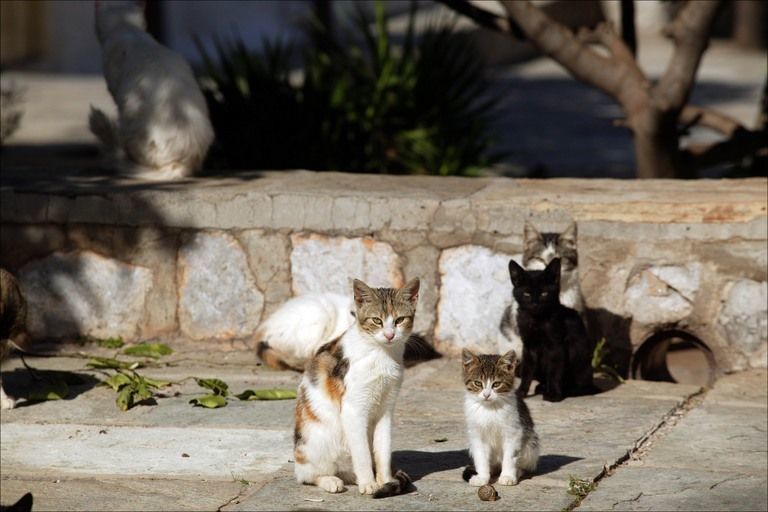Stray Cats

STRAY (POSSIBLY OWNED) OR FERAL CAT
Everyone at some point in their life encounters a stray or feral cat. To better clarify the difference, would be to define what each are. A stray cat is a domestic animal possibly owned that is wandering at large or is lost. A feral cat is an un-owned domestic cat which lives outdoors and avoids human contact or has had human contact at one time but has diminished.
Most times it is difficult to identify which of these the cat may be. Even a social cat who has escaped from its home may run away from humans due to being frightened. If the cat should approach you in a friendly manner, the cat may have an owner or may have been put out of its home recently and has not been exposed long to adapt to its surroundings in a defensive behavior. If you feel that the stray cat may be owned, please contact the shelter so that we may get a description of the cat and an area where located. We, in turn, will check our lost reports to see if someone has reported the cat missing. We also would suggest canvassing the neighborhood to see if anyone could identify the cat or may own the cat. If you fear for the cat’s safety, please call the shelter for further instruction.
It is a continual debate with regards to the feral cat population and where exactly their place is in society. A true feral cat will flee from strangers. They may be independent or part of a colony (a group of cats) Ferals, who are part of a colony, may identify its caretaker and approach but usually not close enough for human contact. Responsible colony caretakers will have their cats spayed or neutered and left ear tipped. The tipped ear identifies to the lay person that the cat is spayed or neutered, has had a rabies vaccine and more than likely has a caretaker.
Most outdoor cats have a life span of approximately 3 to 5 years. Their demise is met by either being hit by a car, wounds that have become infected, parasites, disease, predators, poisoning or just simply lack of food and shelter. A well cared for colony cat may live up to 10 years provided their caretaker oversees the colony properly. They provide the necessities including veterinary care if needed.
Some of the public do not agree with TNR (trap neuter and return) concept, while others do. Trapping and bringing to the shelter is a possible option. Please contact us before you proceed with this. Keep in mind that the shelter does not have the resources to place feral cats.
The shelter has partnered with local rescue groups such as Whiskers World and Happy Hearts and Tails. Both are non-profit and TNR only rescues. These rescues help assist in problem areas where there are a multitude of cats which are not altered and are constantly reproducing. They trap, Spay or neuter, then return to the area they originated from provided there is a caretaker. They are a resource for information pertaining to TNR and also for deterring ferals from you property.
















